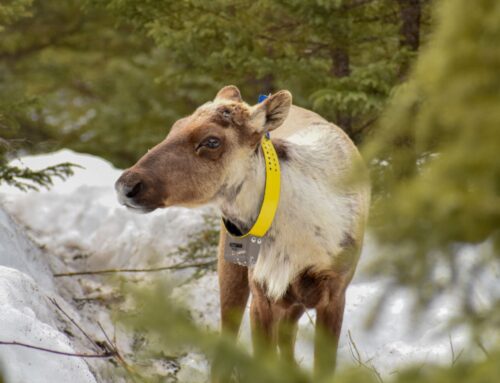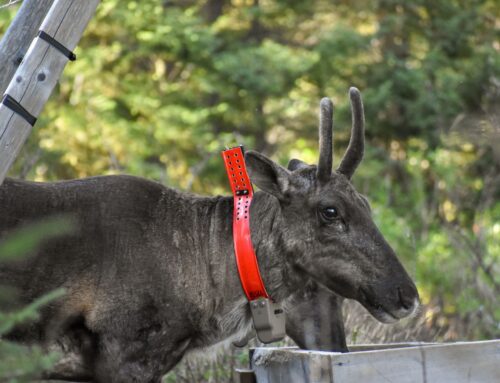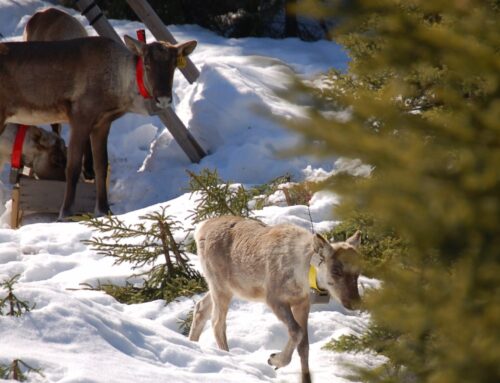Source: Radio-Canada
Published on June 21, 2018
The Anishnabe community of Lac Simon, in collaboration with the First Nations of Kitcisakik and Long Point, is taking action to save the Val-d’Or woodland caribou herd.
With information from Karine Mateu
It is receiving $1.2 million in funding over five years from the Government of Canada to implement conservation measures.
These measures include various research projects to evaluate the effectiveness of recovery strategies.
Based on these priority sectors, which will be identified with the help of the Ministère de la Forêt, de la Faune et des Parcs, we want to target, in particular, logging roads that will be closed and reforested. The goal is to be able to create forest massifs, because we know that the massifs are what allows the caribou to occupy a territory that is safer for them, that is less visited by predators and that reduces mortality by predation,” explains Geneviève Tremblay, biologist for the Council of the Anishnabe Nation of Lac Simon.
Support from government departments
Moreover, the measures will be implemented by First Nations with the support of Environment and Climate Change Canada, but also of the Quebec Ministry of Forests, Wildlife and Parks.
We are working in partnership with them because there will be constraints to closing roads and we will have to deal with these constraints and try to find ways to reconcile the interests of all parties in order to offer the best for the herd and make a difference so that it can survive,” said Ms. Tremblay.
Still a chance of survival
Indeed, according to the biologist, the Val-d’Or caribou herd, which currently has 18 inviduals, can survive.
There are examples elsewhere in the country where populations, sometimes completely extinct, have been reintroduced and are maintaining themselves, she says. It all depends on what we want to do and how far we want to go in our efforts, but it’s clear that it’s possible to do it.
A ray of hope for Greenpeace
Greenpeace Canada is pleased with the news. Olivier Kolmel, who is in charge of the forest campaign, sees a glimmer of hope for the Val-d’Or herd, which, according to him, has been abandoned by Quebec.
While the Quebec government had turned its back on the caribou herd […] we really see a new generation and leadership from the Aboriginal communities who are moving forward and showing that it is possible to have a funding agreement with the federal government, which gives hope that this herd can be re-established,” he said.
For its part, the Action boréale de l’Abitibi-Témiscamingue (ABAT) continues to follow Quebec on this issue.
While saluting Ottawa’s involvement, the president of the organization Henri Jacob wants the Quebec government to change its rhetoric on the Val-d’Or caribou.
One of the things we are asking for and that most stakeholders are asking for is a moratorium on all human activity on this territory for a period of five years in order to give this herd a chance to recover, he said. The other thing is to start closing roads and restricting activity during the time of the original hunt. We could accept that the original hunt could take place, but that people only restrict themselves to that time on the territory and also ask that ATV and snowmobile trails be moved outside the territory used by the caribou herd.
By email, the Quebec Ministry of Forests, Wildlife and Parks promises to install barriers to limit access to caribou areas, to conduct an inventory of the number of individuals by helicopter and to prohibit logging in 2018-2019.





